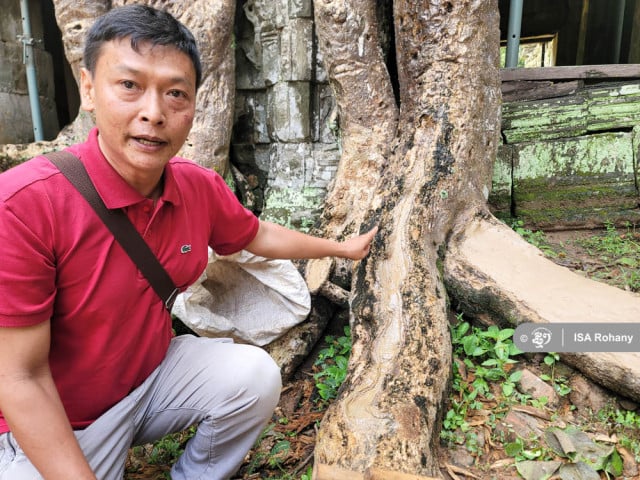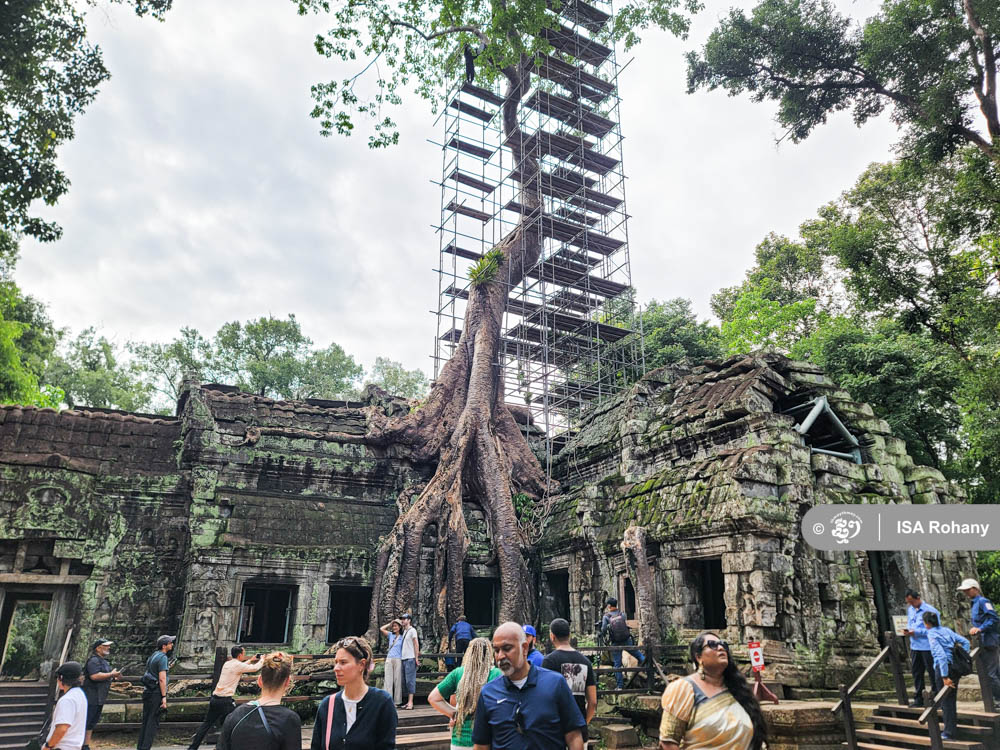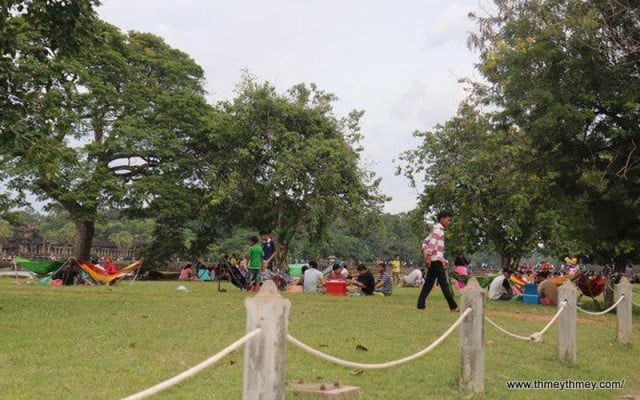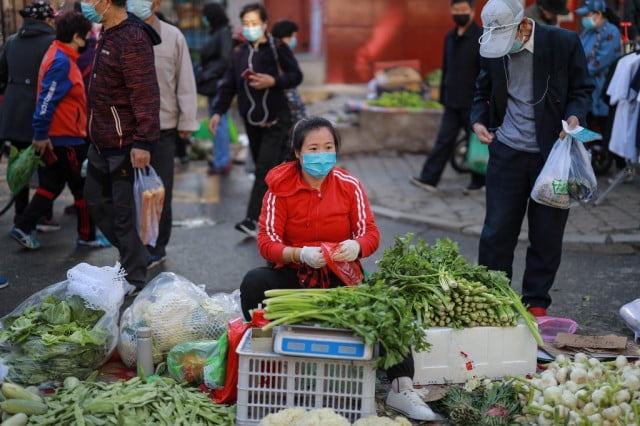Ta Prohm: Maintaining the Trees to Protect the Temple

- By Isa Rohany
- July 16, 2023 2:00 PM
SIEM REAP — Reshaped by nature throughout the centuries, the temple of Ta Prohm in Siem Reap province has been attracting countless visitors both from inside and outside the country who are fascinated at the way the large towering trees that have become part of its walls and towers.
However, if left unattended, extensive damage can be done by tree roots and branches as well as by the large number of visitors who make a point of seeing it when they come to the Angkor Archeological Park. Kong Sovannarith, technical officer with the Department of Water, Forestry, and Infrastructure Management at the APSARA National Authority—the government agency managing Angkor Park—recently explained how the trees are cared for at the temple.

Isa Rohany: When I went to Ta Prohm recently, I noticed that your forestry team was actively tying up the scaffolding to climb an old tree at the eastern corner. Would you explain what they were about to do?
Kong Sovannarith: Yes, the root system of this large tree is affected by illness. We needed to trim some parts of the tree to prevent it from collapsing on tourists and the temple below. At the same time, some branches were also cut off to lighten the entire tree and prolong its stability as well as life.
Isa Rohany: I have observed your team digging up some portion of the roots. What kind of method are you using to take care of an age-old tree?
Kong Sovannarith: The team has been treating the roots of a Tetrameles Nudiflora [a Southeast Asian tree found from India down to northern Australia] on the eastern side of Ta Prohm. As a consequence of the rot in its roots, grooves formed underneath can accumulate water during rainstorms, making the root system wet and eventually rot more. Our team has addressed this by scrubbing the decaying parts by applying resin to prevent rainwater from getting in…[I]f there is a pothole, we will apply some soil with resin and lime powder in the right amount to fill the void. Beside keeping the water out, [this] also stops insects from nesting inside. Finally, we also keep a close eye on the situation to spot issues along the way.
Isa Rohany: So, how long have you been using this method, and how effective is it?
Kong Sovannarith: We have been using this method for over 10 years now. For around 12 years, we have been taking care of the Eucalyptus trees around the Bayon temple. Before that, local people were collecting resin from these trees for business and their burning method has caused the trees to deteriorate. Once the practice had been discouraged, the trees began healing their wounds. However, their healed skin is not as beautiful as the original one.
Isa Rohany: Did you learn this method by yourself?
Kong Sovannarith: We got that method from the Indian archaeological team who worked on the restoration of the Ta Prohm temple. When applying resin, a desired outcome appears. We also developed our own technique, such as using beeswax instead of resin, to coat the soil applied. However, beeswax is quite costly and can melt easily in the heat. Since 2017, I have been curing the Eucalyptus trees behind the Bayon temple by filling the emptied holes with coated soil. For five or six years now, that coated soil has remained more or less in place, unaffected by the elements. At the same time, the trees are also healing by themselves. We keep on recording progress made on a regular basis.
Isa Rohany: Based on its outward appearance, how do you know when a tree needs help?
Kong Sovannarith: As you can see, almost half of the root system and the lower portion of its trunk have been damaged. However, when I climbed, I saw that the upper portion of the trunk remains quite healthy. A few treatments and trimming of the branches will allow the tree to live healthier.
Isa Rohany: It is generally known that temples and trees have an unbreakable bond at Ta Prohm, are interdependent and must rely on one another…[H]ow many big trees are at Ta Prohm and what kind?
Kong Sovannarith: I am not really sure of the total number of large trees at Ta Prohm. We have treated around 25 large ones. Ch’pong is an important species of tree here, growing aesthetically like a Naga [a semi-divine creature in Hindu and Buddhist mythology] from the temple structure. Tourists love seeing this.
Isa Rohany: Lastly, what would you like to tell tourists when they come to visit places like this so that the trees and the temples can be safe?
Kong Sovannarith: The only suggestion I would like to put forward to the visitors who come to Ta Prohm or any of the other temples is that they should contribute to safeguarding the magnificent trees and the temples’ stones. First, avoid stepping on the roots whenever possible. Second, avoid scratching the trees as this action can cause damage. Just like humans, trees can get really sick if left untreated. The tree roots are just like our feet: If they are weak, the wind will just blow and tumble the trees down.
Originally written in Khmer for ThmeyThmey, the story was translated by Luy Sirey Reaksa for Cambodianess















